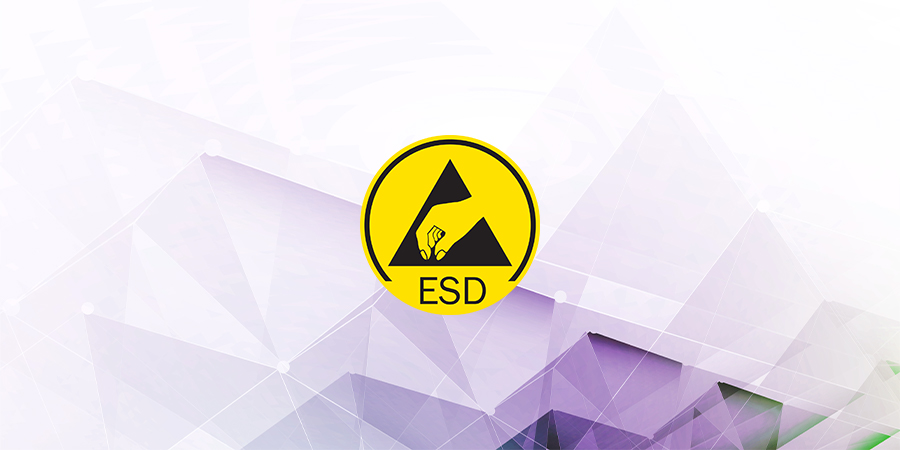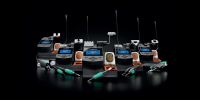


ESD packaging provides the cornerstone to any successful storage or transit regime for an EPA.
ESD packaging provides the cornerstone to any successful storage or transit regime for an EPA.
It is all well and good having your devices, PCBs and components protected whilst inside the EPA, but what happens when they require storage or shipping.
Whilst you design your processes to minimise ESD damage, you cannot guarantee that shipping agents, retail outlets or other handlers of your products will take the same precautionary measures.
That is where ESD bags & other packaging come in.
Within this article, we are going to divulge the different elements of ESD packaging. What are they used for, why they are essential to every ESD control plan and much more.
So, What Is ESD Packaging & Why Is It Needed?
The threat posed by ESD to your Electrostatic Discharge Sensitive (ESDS) devices remains constant from storage to transit and beyond.
There are many scenarios that create a risk of ESD damage to your products. However, the right precautions can eliminate this threat.
Your manufacturing processes are designed to minimise the threat of ESD. But the handling or storage by shipping companies or other stockists (as we alluded to earlier) cannot fully be accounted for.
ESD packaging offers protection to its contained goods, ensuring no charges are built up inside & dissipating any charge build-up on the exterior of the packaging.
It essentially protects your devices through the entire cycle of production, all the way to the customers hands.
Now there are many types of ESD packaging, so let’s outline those in the next section.
Types Of Packaging
ESD packaging does not come simply in one variation. There are, however, 4 main classifications of packaging. Each is made of differing materials, providing varying degrees of protection to the housed devices/components.
Below we have outlined these and the scenarios where you would want to use them:
Shielding
ESD shielding bags are there to offer the best degree of protection from ESD events. They provide intimate protection to ESD-sensitive devices.
The properties of these shielding bags provide somewhat of a barrier that reduces the occurrence of electrostatic discharges, along with the accumulation of static. This helps to provide protection on both the outside and inside of the bag.
You can therefore rely on shielding bags when you require the transportation of sensitive components/devices outside of your EPA.
Anti-Static
Anti-static packaging inhibits properties that reduce the likelihood of tribocharging.
The packaging prevents the build-up of static electricity altogether and will not charge up when rubbed against other materials.
You should be using these bags to pack or transport non-ESD sensitive items, those that are destined for use within an EPA. Anti-static bags help to significantly reduce any damage that can occur from ESD events.
Conductive
ESD packaging that is made of conductive materials are useful for conducting electric charges away from its contents. This routes static away without damaging the components inside.
Conductive packaging gives ESDA devices a good degree of protection. You can find examples of this kind of conductive packaging here.
Moisture Protection
This type of protection specifically helps prevent both ESD and moisture damage to static-sensitive devices during both storage and transit. You can even vacuum pack these bags to add further protection from moisture.
This is achieved by using a moisture barrier bag.
Often you will couple the protection these bags offer with desiccants and humidity cards.
When Should You Use ESD Bags?
There are an endless number of scenarios where ESD packaging is both necessary and required.
Static sensitive devices require protection through the entire manufacturing process. This is right up until they are in the hands of the consumer.
Along with the standard job packaging provides – to protect from outside elements – ESD packaging goes one step further. It shields a product or device from the hidden dangers of static.
This ESD protection aims at satisfying 2 criteria:
- Preventing charges from building up inside the package itself.
- Both resisting and dissipating any charges on the exterior of the product.
Now that you know the types and reasons behind ESD packaging, let’s take a look at the type of considerations you should make when selecting the correct packaging.
Considerations When Selecting The Right ESD Packaging Bags?
1- Understand Product Sensitivity
Knowing the degree of sensitivity that your device or parts have to static will ultimately determine the level of protection that you invest in.
Electronics in particular, are susceptible to disturbances whilst in transit. Knowing the degree of vulnerability around your product, helps you to select the most cost-effective and appropriate packaging for your device.
Ensuring that everything is correctly labelled with ESD warning labels will also provide added tamper-proof security to your ESD bags.
2- Select & Test The Packaging
It is essential that you select the most appropriate packaging for your device or part.
That goes for selecting the right bag type, along with the correct specifications for the width and length of the packaging. You must ensure that the contents comfortably fits within the ESD bag, completely covering the PCB.
Testing this prior to investing in a solution ensures that you have the right size.
Similarly, you need to test the packaging to ensure that it is rigorous enough for the role it plays in your static control plan.
Should the device or PCB that you are placing inside the ESD packaging have any sharp edges or components that could puncture the bag, you may need to adapt your packaging.
You could either remove said components that could cause the puncture, or utilise ESD bubble wrap to cover the PCB.
3- Moisture
Protection from elements such as moisture is paramount in electronic manufacturing. Transit and storage conditions can likely be humid. Knowing this, there are a few different ways that you can safeguard the PCBs or components you manufacture or work with.
Selecting either a metallised or moisture barrier bag will aid in safeguarding whatever is stored inside whilst in humid environments. Humidity cards can further aid in reporting the effectiveness of said packaging, by giving a clear reading of the moisture levels inside.
Often packaging will be coupled with desiccant bags, which draw in the moisture from the air inside the bag and trap it within the desiccant (usually clay).
4- Type Of ESD Bag You Need
As already discussed above, there are varying types of packaging, all geared towards a specific purpose. However, there are additional classifications of packaging, depending on the role or contact that they have with the component. These classifications are defined by EN 61340-5-1 as:
Intimate Packaging - This can be classified as packaging that makes contact with the Electrostatic Discharge Sensitive (ESDS) device. This holds the product in storage or transit.
Proximity Packaging – This type of packaging will enclose the ESDS, often it will enclose more than one at a time. This will often enclose an ESDS that is already housed inside intimate packaging.
Secondary Packaging – This packaging gives physical protection to the ESDS. It does not possess the properties required to be in direct contact with the ESDS whilst in storage or transit as it is a source of ESD.
Require ESD Packaging?
Should you require any advice or the procurement of any type of ESD packaging, please get in touch. Our offering and solutions are extensive, with a solution for almost every instance.
Talk to our team today to discuss your requirements.















